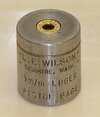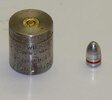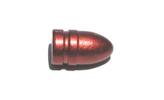While gauging the resized brass is a good idea, if finished rounds are contacting chamber wall, it may be due to thicker case wall bulging case neck below where taper crimp is applied. If this is the case, then sorting out thicker case wall brass may be required.
Mark the finished round that won't plunk in the barrel with marker to see where the rub is -
https://www.shootingtimes.com/editorial/reloading-tips-the-plunk-test/99389
If area near case neck is rubbing the chamber wall, then it's not resizing die issue rather thicker case wall issue. (And increasing taper crimp won't help as taper crimp is applied around .100" below case mouth. Lee FCD could be used to post-size the case neck but I would check for bullet setback)
Since PPU/Geco headstamp brass are giving you problems, it's likely thicker case wall brass that's the cause as they tend to have thicker than typical case wall at .200" below case mouth where bullet base gets seated down to (See below comparison measurements with Starline brass) -
https://www.thehighroad.org/index.p...nd-bullet-setback.830072/page-3#post-10713822
Case Wall Thickness .200" below case mouth (Around bullet seating depth for HSM 115 RN at 1.130" OAL):
GECO: .014"/.014"/.0125"/.014"
GECO: .014"/.014"/.014"/.015"
GECO: .014"/.013"/.014"/.013"
PPU: .014"/.014"/.014"/.013"
PPU: .015"/.015"/.013"/.014"
PPU: .013"/.014"/.014"/.013"
Starline: .012"/.012"/.013"/.012"
Starline: .012"/.013".012"/.011"
Starline: .012"/.012"/.013"/.013"




